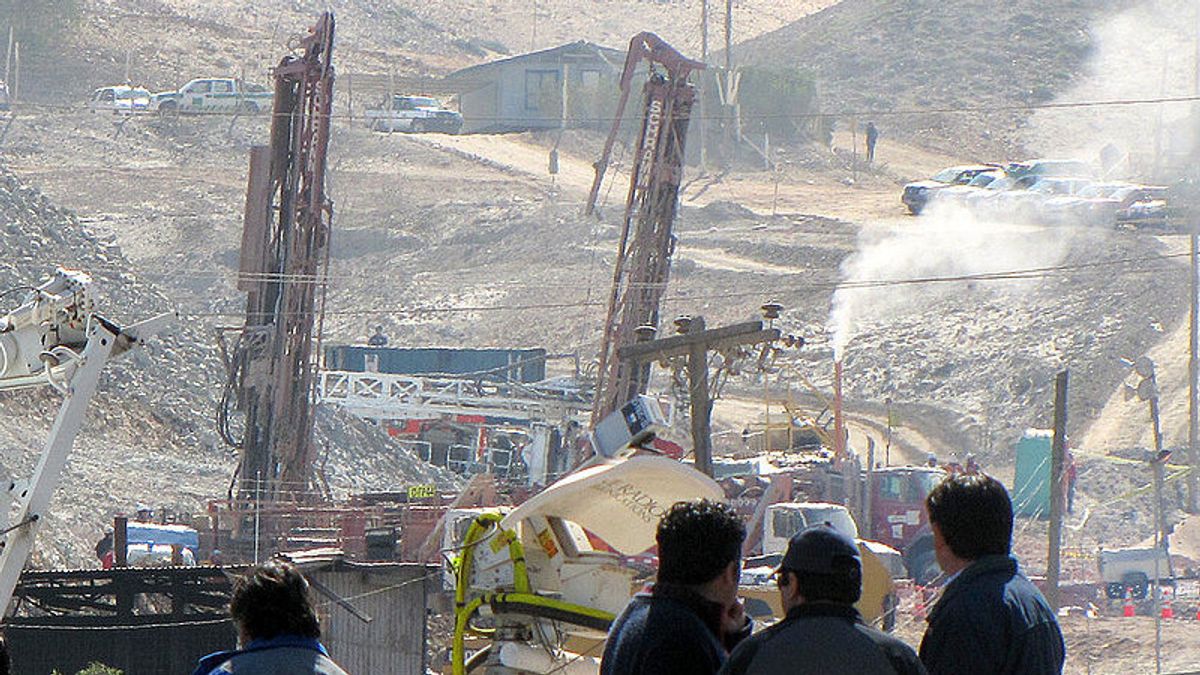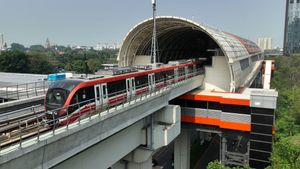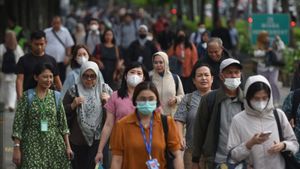JAKARTA - After 69 days, on October 13, 2010 the evacuation of 33 miners trapped in the collapsed gold and copper mine was successfully carried out. The San Jose mine, owned by the San Esteban Primera Mining Company, is located in the Atacama Desert, Chile, about 80 km northwest of the city of Copiapó and about 800 km north of Santiago.
Launching Britannica, the mine collapsed on August 5, 2010, at around 14:00 local time. The day before there had been a warning of a disturbance, but activities were still carried out. The mine, which has been open since 1889, has been the site of many previous accidents, including an explosion in 2007 that killed three miners.
Management did little to improve conditions before the mine was allowed to continue excavation by Chile's National Geological and Mining Service (Sernageomin) in 2008. In the wreckage, 33 workers were buried. Among them, 32 Chileans and one Bolivian.
Most are miners, although some subcontracted workers have also been trapped. The mine, which rotates into the depths of the mountain, is about 800 meters deep.
A local emergency team tried to save them that same night but to no avail. Following this initial failure, the Chilean Government ordered Codelco, the state-owned mining company, to coordinate rescue efforts.
On August 7, a second collapse occurred, blocking access to the hole planned as an exit point for workers. The next day rescue workers started drilling to make the tunnel.
However, finding the point where the workers are located is complicated due to outdated maps of the mine's structure. On August 22, one of about 30 test kits detected motion. When pulled to the surface, a note read "We're all fine." A recorder was then inserted through the pinhole to confirm the condition of the workers. The point where the people were trapped was about 700 meters from ground level.

For the first 17 days, the workers had no contact with outsiders. They live off the rest of the emergency ration supplies for 2 days of feeding. Their water supply is obtained from springs and from radiators.
Worse, some men get fungal infections due to the high humidity and heat of 35°C. Some also suffered from eye and breathing problems, but they did not suffer any injuries.
On August 23, 2010, a nutrient gel, water, and communication device were successfully inserted through a small hole. To ensure the survival of the workers until they can be evacuated, experts ranging from mental health specialists to NASA scientists were brought to the mine site. As the day progressed, solid food was channeled through the channel, as were first aid supplies, exercise equipment, and lighting kits.
The evacuation only came to light on October 9, 2010. Long-term drilling has finally resulted in an accessible tunnel.
Two days later the top of the tunnel was lined with metal tubing in preparation for the workers' ascent in specially designed metal capsules. Exactly October 13, 2010 midnight, the first worker was successfully expelled. The last person to be saved was a supervisor who was managing the people during their time underground.

The rescue of the miners is celebrated both at home and abroad. They have a six-month health care guarantee and are flown to international destinations for media appearances and tours. Some workers end up becoming motivational speakers.
However, when the bids and attention died down, the miners' problems became apparent. Many have difficulty coping with the side effects of trauma.
Several family members of the victims said the miners changed permanently. Some of them abuse alcohol and drugs. Government-subsidized mental health care was revoked after they missed an appointment to travel.
In March 2011 a congressional commission blamed the collapse incident on mine owners and Chile's National Geological and Mining Service. Two miners filed a collective lawsuit against the government in July 2011, each asking for more than half a million dollars. The owner of the mining company agreed to reimburse the government for about a quarter of the cost of the rescue in March 2012.
In August 2013, prosecutors ruled that neither the Chilean National Geological and Mining Service nor the mine owners should bear any burden. Criminal liability for the accident, reduces the miner's legal path to a civil lawsuit. The mining company eventually sold the now-closed San Jose mine to pay the miners and reimburse the Chilean government for the cost of the rescue effort.
*Read other information about TODAY's HISTORY or read other interesting articles from Putri Ainur Islam.
TODAY'S HISTORY MoreThe English, Chinese, Japanese, Arabic, and French versions are automatically generated by the AI. So there may still be inaccuracies in translating, please always see Indonesian as our main language. (system supported by DigitalSiber.id)









